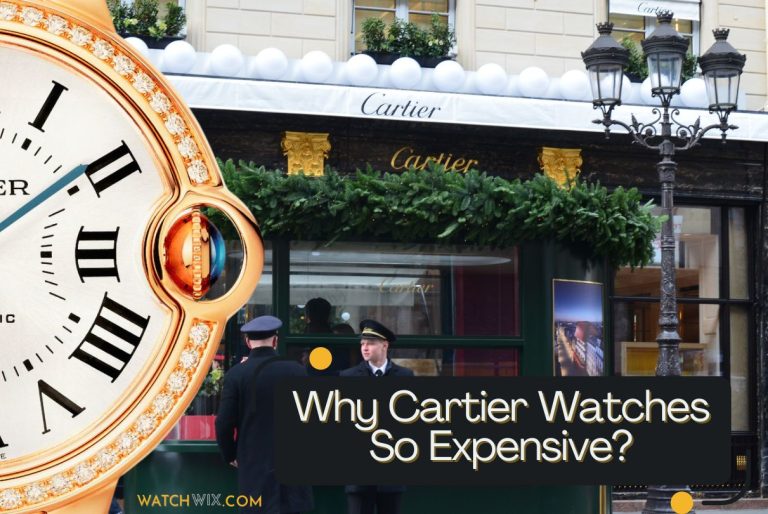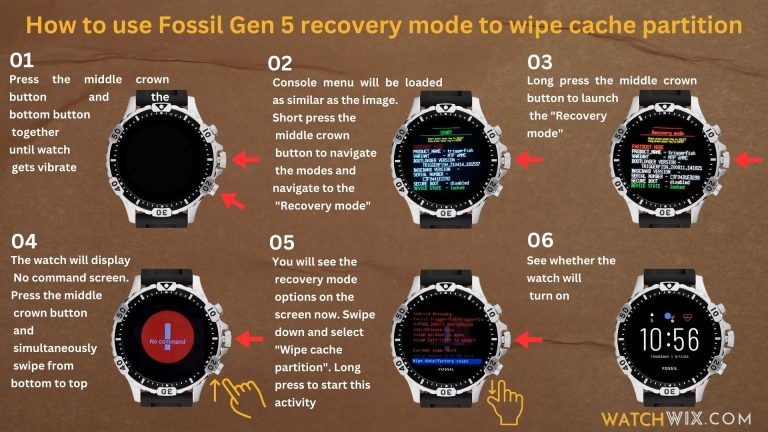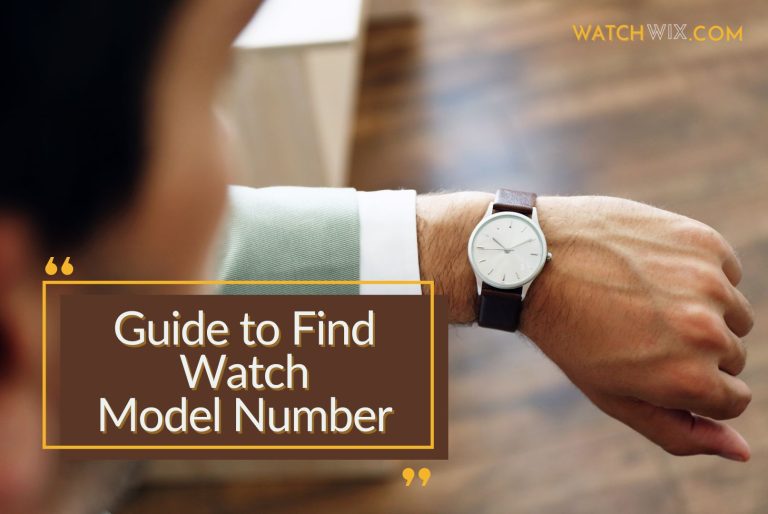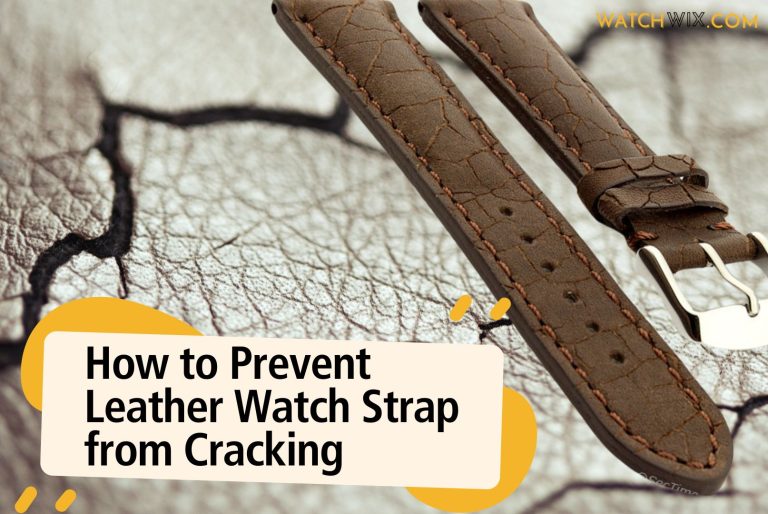Importance of Rolex Papers [2024 Detail Guide]
Rolex watches are super popular as a luxury brand, because of their amazing craftsmanship, classic design, and durability. Each Rolex is made with top-notch materials and the latest technology, ensuring they’re precise and reliable. The brand has a history of innovation, like creating the first waterproof case and self-winding movement, which has made it a leader in the watch world. Plus, Rolex watches hold their value really well and often even increase in value, making them a great investment for collectors.
It’s really important to make sure a Rolex is genuine because the real ones deliver the quality and performance Rolex is famous for. Fake ones just don’t measure up and can trick buyers into losing money and trust. So, making sure your Rolex is authentic is key to keeping its value and your peace of mind.

Importance of Rolex Papers
Rolex papers, often referred to as the “Rolex warranty card” or “Rolex certificates”. These are the official documents that come with the purchase of a new Rolex watch. These papers are important for several reasons as below,
- Proof of Authenticity
Rolex papers serve as an official proof of authenticity, verifying that the watch is a genuine Rolex product. This is important for both the original buyer and any future buyers if the watch is resold. - Warranty Information
The papers include the warranty information, detailing the terms and conditions of the Rolex warranty. Rolex typically offers a five-year warranty on their watches, covering manufacturing defects and issues that may arise from normal use. - Detailed Information
The documents contain specific details about the watch, including the model number, serial number, date of purchase, and the retailer’s information. This information is essential for tracking the watch’s history and provenance. - Increases Resale Value
Having the original Rolex papers can significantly increase the resale value of the watch. Collectors and buyers often seek out watches with complete documentation as it assures them of the watch’s authenticity and well-maintained history. - Proof of Ownership
Rolex papers serve as a legal proof of ownership, which can be important in case of theft or loss. They can help in proving that the watch belongs to you and can assist in recovery or insurance claims.
Rolex papers are vital documents that accompany a new Rolex watch, providing authenticity, warranty coverage, detailed information about the watch, and increasing its resale value. Keeping these papers safe is essential for any Rolex owner, as they play a critical role in maintaining the watch’s value and ensuring its authenticity.

How to Proof Rolex Watch Authenticity without Papers?
Proving the authenticity of a Rolex watch without its original papers can have a challenge. Original papers greatly simplifies the authentication process. But there are several methods and indicators to proof your Rolex watch is genuine,
1. Serial and Model Numbers
You can check the serial number and model number on the watch. The serial number is usually located in watch face. Look for any 4 to 8 digit serial contain numbers and sometimes letters in between too. If you can’t find it there, flip the watch over. On the back, you might see more info engraved, like the model number or serial number.
The numbers should be finely engraved and not etched. Genuine Rolex engravings are precise and clean, which can be a strong indicator of authenticity.
2. Movement and Caseback
A genuine Rolex has a high-quality movement with intricate details, which can be confirmed by opening the caseback. However, this should be done by a professional to avoid damage. Additionally, most Rolex models have a smooth caseback. Be wary of transparent casebacks, as they are not typical for Rolex watches and can indicate a counterfeit.
3. Cyclops Lens
The Cyclops lens over the date should magnify the date by 2.5 times. Many counterfeit watches have a lower magnification level. This feature is a distinctive aspect of Rolex watches and can help in verifying authenticity.
4. Weight and Feel
A genuine Rolex is made from high-quality metals and is typically heavier than a counterfeit. The watch should feel solid and well-constructed. The weight and overall feel of the watch can provide a significant clue about its authenticity.
5. Dial Details
Inspect the Rolex logo, text, and markers on the dial. They should be sharp, clear, and precisely printed. Genuine Rolex watches have high-quality luminescent markers that glow brightly in the dark. Any discrepancies in these details can suggest a counterfeit watch.
6. Crown and Screws
The winding crown should have the Rolex crown logo and be finely crafted. Inside the bracelet links, Rolex uses high-quality screws, not pins. The screws should be polished and well-fitted, indicating meticulous craftsmanship typical of Rolex watches.
7. Bracelet and Clasp
The bracelet links should feel solid and not hollow, reflecting the high-quality construction of genuine Rolex watches. The clasp should have the Rolex logo and be sturdy and well-made. Some models have a micro-engraved crown logo on the clasp, visible under magnification.
8. Professional Authentication
Take the watch to a certified watchmaker or jeweler who specializes in Rolex watches. They can open the case and inspect the movement and other intricate details. For the most definitive authentication, send the watch to an authorized Rolex service center. They can verify the watch’s authenticity and provide a service history if the watch has been serviced there before.
What are the Information Available in Rolex Papers?
The information available in Rolex papers (also known as the Rolex warranty card or certificate) usually includes following,
- Serial Number – Each Rolex watch has a unique serial number, which is recorded on the warranty card. This number serves as an identifier for the specific watch and is crucial for verifying its authenticity and tracking its history.
- Model Number – The model number of the watch is also listed on the warranty card. This number corresponds to the specific model and reference of the Rolex watch, providing additional information about its design and features.
- Purchase Date – The date of purchase is often recorded on the warranty card. This information helps determine the warranty coverage period and can be useful for future reference when servicing or reselling the watch.
- Authorized Dealer Information – The warranty card may include details about the authorized Rolex dealer from which the watch was purchased. This can include the dealer’s name, location, and stamp or signature as a mark of authenticity.
- Warranty Terms – The warranty card outlines the terms and conditions of the Rolex warranty, including the duration of coverage and what is covered under the warranty. This information is essential for understanding the warranty protection provided by Rolex.
- Service History – Some warranty cards may include spaces to record service history, such as dates and details of any maintenance or repairs performed on the watch. This helps track the watch’s maintenance and can provide valuable information for future servicing.
How to Find Rolex Papers are Genuine?
1. Inspect the Warranty Card
Start by examining the material and quality to find out your Rolex warranty card is genuine. Authentic Rolex warranty cards are made from high-quality plastic and feel solid. The print quality should be crisp and free from smudges or misalignment. Look for a hologram on the card that shifts colors and designs when tilted, indicating authenticity.
Additionally, please also check the text and font, those should be consistent, clear, and free of typographical errors. The purchase date and authorized dealer’s stamp should be clearly printed, without smudges or fading.
2. Review the Serial and Model Numbers
Ensure that the serial and model numbers on the warranty card match those on the watch itself. The serial number is located between the lugs at the 6 o’clock position, and the model number is at the 12 o’clock position. Verify that these numbers follow the consistent format and length that Rolex uses. Matching and correctly formatted numbers are strong indicators of authenticity.
3. Check the Original Documentation
Genuine Rolex papers often include additional documentation such as booklets, manuals, and certificates of authenticity. These should be printed on high-quality paper with clear, crisp text and images. Additionally, Rolex papers are usually provided in a green leather wallet embossed with the Rolex crown logo. Inspect the wallet for its quality and craftsmanship to further verify authenticity.
4. Examine the Packaging
Authentic Rolex watches come with both an outer and inner box, both featuring the Rolex logo. These boxes should feel substantial and well-made. Also, check for accessories like hang tags, price tags, and additional links for the bracelet. All accessories should match Rolex’s quality and branding standards, reinforcing the authenticity of your papers.
5. Authenticate with Rolex or an Authorized Dealer
If you are uncertain about the authenticity of the papers, take them to an authorized Rolex dealer for verification. Dealers have the expertise and resources to confirm whether the documents are genuine. Consider sending the watch and papers to a Rolex service center, which can verify the authenticity and provide a detailed history of the watch if it has been serviced there before.

How Rolex Serial Numbers Made?
Rolex serial numbers are meticulously crafted to ensure the authenticity and traceability of each watch. Rolex has employed different systems for generating serial numbers over the years to help determine the approximate production year of a watch.
1. Early Sequential Serial Numbers (1905-1987)
From the founding of the company in 1905 until 1987, Rolex used a sequential numbering system. Each watch was given a unique serial number that was incremented sequentially. This system made it relatively straightforward to approximate the production year of a watch by comparing its serial number to known ranges used during specific years.
Example: A watch with a serial number of 500,000 would have been produced in the mid-1940s.
2. Letter Prefix System (1987-2010)
In 1987, Rolex introduced a new system that combined letters and numbers. Each series started with a letter followed by a sequence of numbers. The letter changed approximately every one to two years.
Example:
- “R” serial numbers were used around 1987-1988.
- “L” serial numbers were used around 1988-1989.
3. Random Serial Numbers (2010 to Present Days)
Since mid-2010, Rolex has implemented a random alphanumeric system for serial numbers. This change was made to enhance the security and authenticity of their watches, making it more difficult for counterfeiters to replicate their serial numbering system. The random serial numbers do not follow a chronological order, making it impossible to determine the exact production year from the serial number alone without consulting Rolex’s records.
Where to Find Rolex Serial Numbers
The serial number of a Rolex watch is typically engraved on the watch itself, usually in the following locations:
- Between the Lugs: For most Rolex watches, the serial number is engraved between the lugs at the 6 o’clock position. The watch band must be removed to view the serial number.
- Rehaut (Inner Bezel): On newer models, starting around 2005, the serial number is also engraved on the rehaut (the inner bezel) between the 6 o’clock and 12 o’clock positions.
Verifying Rolex Serial Numbers
Verifying a Rolex serial number involves checking the number against known Rolex production records and databases. Authorized dealers and Rolex service centers can provide authentication services by cross-referencing the serial number with Rolex’s official records. Additionally, the quality of the engraving can be an indicator of authenticity, as genuine Rolex serial numbers are finely and precisely engraved.
What is the first Rolex watch produced?
The first Rolex watch ever produced was the Rolex Oyster, introduced in 1926. This groundbreaking timepiece was the world’s first waterproof wristwatch, featuring a hermetically sealed case that protected the movement from water and dust. The innovative design of the Rolex Oyster was a significant milestone in watchmaking history, marking the beginning of Rolex’s reputation for quality, durability, and precision.
Reference: Rolex.com – 1926 The first waterproof wristwatch
History of Rolex Watches
1905: Founding of Wilsdorf & Davis
In 1905, Hans Wilsdorf and his brother-in-law Alfred Davis founded Wilsdorf & Davis in London. This company, initially focusing on the distribution of timepieces, would eventually become Rolex, setting the foundation for one of the world’s most renowned watch brands.
1908: Creation of the Rolex Brand
Hans Wilsdorf registered the trademark “Rolex” in 1908, choosing the name because it was easy to pronounce in many languages and short enough to fit on a watch dial. This marked the official birth of the Rolex brand.
1910: First Chronometric Precision Certificate
In 1910, a Rolex watch received the Swiss Certificate of Chronometric Precision from the Official Watch Rating Centre in Bienne. This was a historic achievement, as it marked the first time a wristwatch received such a prestigious certification.
1914: Kew Observatory A-rating
Rolex made history again in 1914 when one of its watches obtained a class “A” precision certificate from Kew Observatory in England. This was the first wristwatch to receive such a high level of precision certification, previously reserved for marine chronometers.
1919: Move to Geneva, Switzerland
In 1919, Rolex moved its headquarters to Geneva, Switzerland, a city renowned for its high-quality watchmaking. This relocation positioned Rolex at the heart of the luxury watch industry.
1926: Introduction of the Oyster Case
Rolex introduced the Oyster case in 1926, the world’s first waterproof wristwatch case. The Oyster case featured a patented system of screwing down the bezel, case back, and winding crown against the middle case, ensuring the watch’s waterproofness and marking a significant innovation in watchmaking.
1931: Development of the Perpetual Movement
In 1931, Rolex developed the first self-winding mechanism with a perpetual rotor. This invention led to the modern automatic watch movement, revolutionizing the watch industry by providing a mechanism that harnesses the wearer’s movements to keep the watch wound.
1945: Launch of the Datejust
The Datejust was launched in 1945, becoming the first wristwatch to display the date through an aperture on the dial. This innovation made it instantly recognizable and set a new standard for watch functionality.
1953: Introduction of the Submariner
Rolex introduced the Submariner in 1953, the first wristwatch to be waterproof to a depth of 100 meters (330 feet). This model set the standard for diver’s watches and became an essential tool for professional and amateur divers alike.
1954: Launch of the GMT-Master
In 1954, the GMT-Master was introduced in collaboration with Pan American Airways. This watch allowed pilots to keep track of multiple time zones simultaneously, making it an essential tool for international flights and a favorite among travelers.
1956: Release of the Day-Date
Rolex launched the Day-Date in 1956, the first wristwatch to display the date and the day of the week spelled out in full. Known as the “President,” this watch became popular among world leaders and distinguished figures.
1960: Deep Sea Special
The Rolex Deep Sea Special reached a depth of 10,916 meters (35,814 feet) attached to the Trieste bathyscaphe in 1960. This feat demonstrated Rolex’s expertise in creating watches capable of withstanding extreme conditions.
1963: Introduction of the Cosmograph Daytona
In 1963, Rolex introduced the Cosmograph Daytona, a chronograph designed for racing drivers. This model quickly became an iconic sports watch, favored by professional drivers and collectors for its precision and style.
1971: Launch of the Explorer II
The Explorer II was launched in 1971, designed specifically for spelunkers and polar explorers. Featuring a 24-hour hand and fixed bezel, this watch helped adventurers distinguish between day and night in environments with continuous daylight or darkness.
1985: Introduction of 904L Stainless Steel
Rolex began using 904L stainless steel in 1985, known for its exceptional resistance to corrosion and ability to hold a polish. This material choice further enhanced the durability and longevity of Rolex watches, reinforcing their status as premium, high-quality timepieces.






